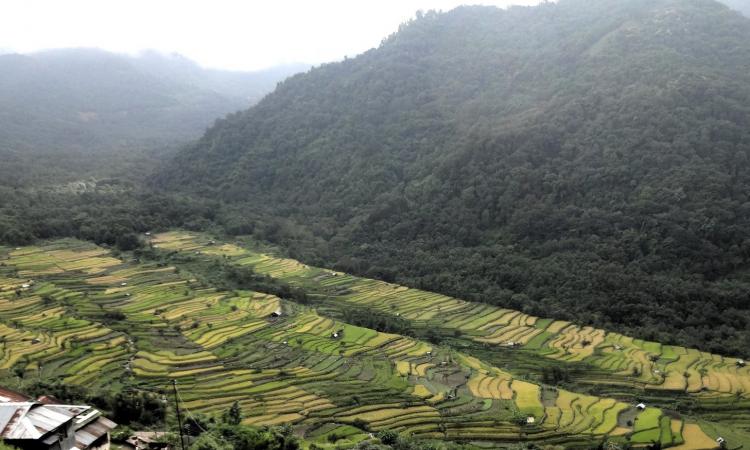
Mountain farmers are facing a very volatile situation right now. Food crops are being replaced by cash crops, which return better dividends. Due to this, their overall economy has gotten much better. As a whole, more of them are migrating from rural to urban areas. Their nomadic way of life is dwindling away as grazing lands are shrinking, traditional routes are being blocked in the name of development and newer generations are acquiring more education.
When one looks at the pace of development in the mountains and the rising number of natural disasters, it gives an impression that “Man is constructive, God is destructive.” The truth is that mountain people are living in a hot, flat and crowded world but what exactly does that mean?
Hot: Due to climate change, temperatures are increasing, which means that the crops that used to flourish in the plains are now moving up to hilly areas. Traditional varieties of crops are being abandoned since they fetch lower prices. Cultivation of a variety of fruits and vegetables is now possible, which has led to an increase in farming income. Many families earning as much as Rs 7-8 lakh per annum.
Flat: Due to greater economic opportunities, more families are prospering which is reducing the gap between the have's and the have not's.
Crowded: While the size of the families in th mountains are increasing, land holdings are shrinking. This is especially true for Himachal Pradesh, Jammu and Kashmir and Uttarakhand and less so for north eastern Himalayan states. The burden on natural resources is increasing likewise.
Should we march forward in this manner? How much longer can we sustain this momentum? 20 years, possibly but that isn't certain. Can we sustain this level of growth while also ensuring that there is no further impact of climate change? When it comes to present day challenges, what is most troublesome for mountain farmers is the problem of water scarcity. Some areas are even going through water-induced migration, which is not a good sign.
Mountain farming is in the middle of all kinds of opportunities and challenges. These challenges can also be seen as possibilities to innovate and adapt. But it is not going to be a level playing field for all the communities. Some will vanish while others will enjoy the benefits. Their nomadic lifestyle is already in crisis as newer generations are acquiring education and have greater aspirations. They may not accept the traditional way of living. Is it possible to make the practice sustainable and profitable enough for the new generation?
The concept of shifting agriculture like jhum cultivation in north-eastern states is also being questioned for its burden on forests. Can we reinvent the concept so that the impact on natural resources is mitigated but the practice survives?
How we handle the hot, flat and crowded world of mountain farming is a challenge for policy makers as well as for those working on technology. China is going through reverse migration among mountain farmers. Can that happen in the Indian Himalayas too? Is it possible that 2 out of 10 people will return to their native lands with innovative economic models that are also ecologically sound?
Switzerland's policy to compensate mountain people for helping mitigate impact of climate change also needs to be studied in India. Can we pay those living in the hills for maintaining their areas and helping ensure ecological and economic security?
Dr Tej Pratap is the Vice-Chancellor of the Sher-e-Kashmir University of Agricultural Sciences and Technology, Jammu and Kashmir. This post is based on his talk at the Sustainable Mountain Development Summit-III held at Kohima, Nagaland, from September 25-27, 2013.
/articles/their-world-hot-flat-and-crowded